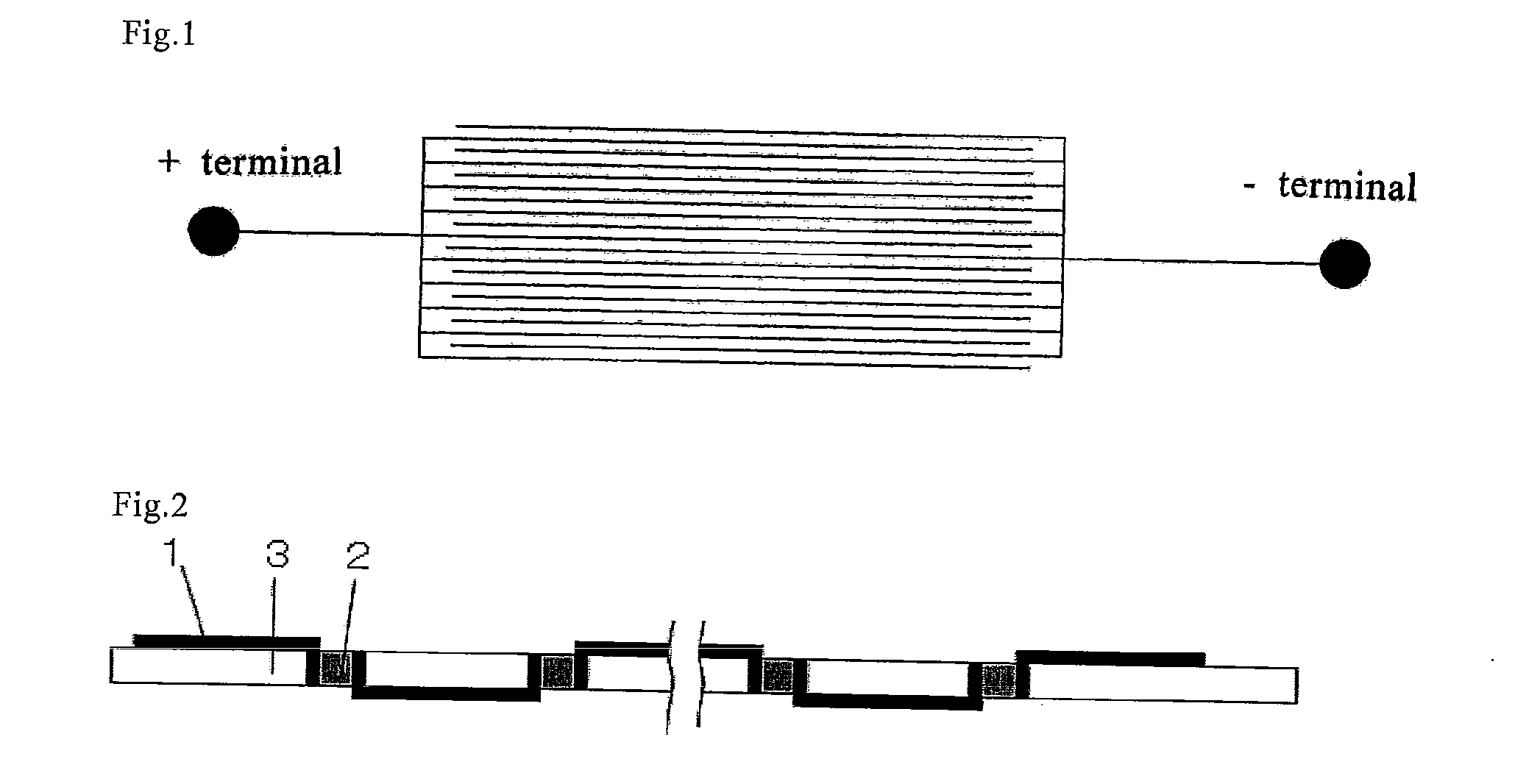Laminate and process for producing the laminate
a technology of laminate and process, applied in the field of laminate, can solve the problems of high dielectric constant and high dielectric loss of laminate, large change in dielectric constant, and high frequency signal propagation quality, and achieve excellent electrical properties, low resistance conductive, and high adhesion.
- Summary
- Abstract
- Description
- Claims
- Application Information
AI Technical Summary
Benefits of technology
Problems solved by technology
Method used
Image
Examples
production example 1
[0144]Pellets of a thermoplastic cyclic olefin resin (“Zeonor 1420” manufactured by Zeon Corporation, glass transition temperature (Tg): 136° C.) were dried at 100° C. for 4 hours using a hot-blast dryer through which air was circulated. The pellets were extruded at 260° C. using a single-screw extruder (50 mm) provided with a leaf-disc polymer filter (filtration accuracy: 30 μm) and a T-die. The extruded sheet-shaped thermoplastic cyclic olefin resin was passed (cooled) through three cooling drums (diameter: 250 mm, drum temperature: 120° C., take-up speed: 0.35 msec) to obtain a transparent resin film. The thickness of the film was 100±2 μm. The volatile content was 0.1% or less. The surface roughness (Ra) of the film was 0.05 μm or less. Surface defects (e.g., die line, fish eye, foreign matter, dent, projection, and scratches) were not observed with the naked eye when applying light.
production example 2
[0145]A transparent resin film was obtained in the same manner as in Production Example 1, except for using pellets of another thermoplastic cyclic olefin resin (“Zeonor 1600” manufactured by Zeon Corporation, glass transition temperature (Tg): 160° C.), and changing the extrusion temperature to 280° C. The thickness of the film was 100±2 μm. The volatile content was 0.1% or less. The surface roughness (Ra) of the film was 0.05 μm or less. Surface defects (e.g., die line, fish eye, foreign matter, dent, projection, and scratches) were not observed with the naked eye when applying light.
Comparative Production Example 1
[0146]Pellets of a cyclic olefin resin (“Zeonor 1420” manufactured by Zeon Corporation, glass transition temperature (Tg): 136° C.) were dried at 100° C. for 4 hours using a hot-blast dryer through which air was circulated. The pellets were injection-molded at 280° C. using an injection molding machine provided with a die that can produce a sheet having dimensions of 10...
example 1
[0147]The resin film obtained in Production Example 1 was subjected to the following ultraviolet irradiation treatment (surface modification treatment). The resin layer was immersed (cleaned) in an NaOH aqueous solution (50 g / l) at 50° C. for 2 minutes before the surface modification treatment.
[0148]High-power low-pressure mercury lamp: “PL16-110” manufactured by Sen Lights, Co., Ltd., dominant wavelength: 184.9 nm and 253.7 nm
Measurement of intensity of ultraviolet rays: “C6080-02” manufactured by Hamamatsu Photonics K.K., 9.0 mW / cm2 (184.9 nm), 63 mW / cm2 (253.7 nm)
Distance between mercury lamp and specimen: 30 mm
Irradiation time: 5 minutes
Atmosphere: air
[0149]Surface temperature of resin layer: 50° C.
[0150]The resin film was washed with water after completion of each step.
[0151]In order to confirm the surface modification state, a water drop was dropped onto the surface of the specimen, and the contact angle was observed to determine the hydrophilicity of the s...
PUM
| Property | Measurement | Unit |
|---|---|---|
| Ra | aaaaa | aaaaa |
| thickness | aaaaa | aaaaa |
| glass transition temperature | aaaaa | aaaaa |
Abstract
Description
Claims
Application Information
 Login to View More
Login to View More - R&D
- Intellectual Property
- Life Sciences
- Materials
- Tech Scout
- Unparalleled Data Quality
- Higher Quality Content
- 60% Fewer Hallucinations
Browse by: Latest US Patents, China's latest patents, Technical Efficacy Thesaurus, Application Domain, Technology Topic, Popular Technical Reports.
© 2025 PatSnap. All rights reserved.Legal|Privacy policy|Modern Slavery Act Transparency Statement|Sitemap|About US| Contact US: help@patsnap.com


